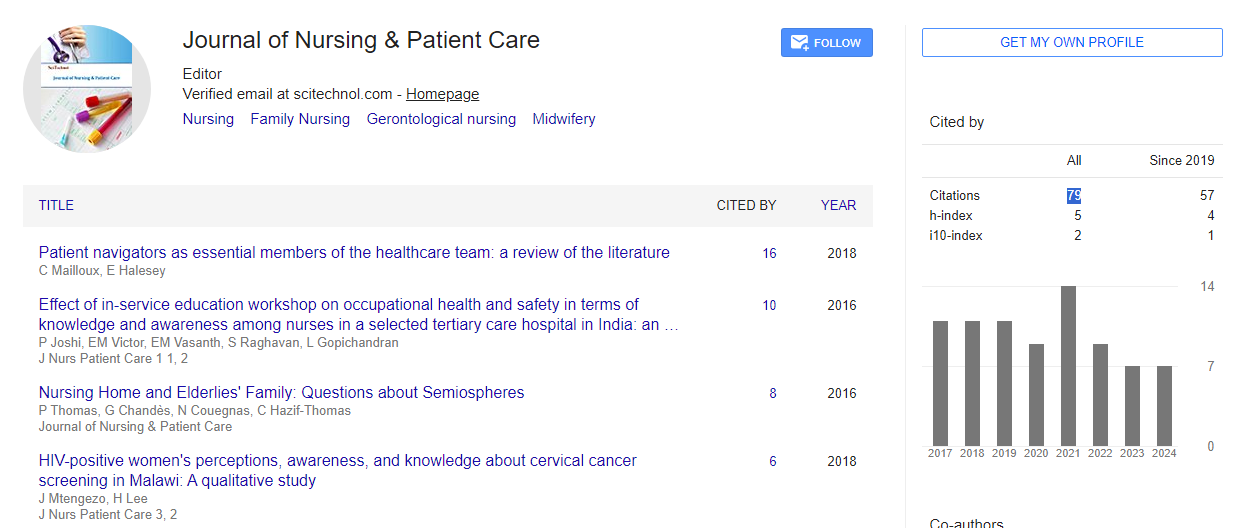The relationship between nursing students perceptions toward success and failure factors and their academic performance: A descriptive correlational study
Faiza A. Abou El-Soud
King Saud bin Abdulaziz University for Health Sciences, KSA
: J Nurs Patient Care
Abstract
With the intention of maximizing academic success and minimizing academic failure among nursing students. It is a crucial to carry out several researches for better understands the success and failure-related factors for improving academic performance and quality of the nursing graduates that have a direct reflection on the country’s monetary development, social progress, and better living for the individual. Purpose: was to investigate associations among the dependent variable (academic performance or GPA) and the independent variables (success and failure factors as well as demographic characteristics). Methodology: A Correlational descriptive-design was conducted with a convenience sample of 150 female senior nursing students, college of nursing, King Saud bin Abdulaziz University for Health Sciences, Riyadh-KSA. A self-reporting questionnaire has three main categories, which included demographic characteristics; success factors; and failure factors were examined to correlate with their academic performance. The data were analyzed using Pearson correlation to estimate the degree of association between students’ performance and success and failure factors as well as demographic characteristics; and regression analysis to determine the Model Summary, ANOVA and Coefficient. The results revealed that a positive association between academic performance and demographic characteristics includes age, level of English language skills, and language barriers at the P value (.05) level. In addition, there were degrees of associations between students’ academic performance and success factors such learner factor at 40 percent and (r = .408; p =.000); and lecturer factor at 18 percent and (r = .187; p =.058). Meanwhile, there were degrees of associations between students’ academic performance and failure factors such learner factor at 39 percent and (r = .339; p =.000); lecturer factor at 21 percent and (r = .219; p =.000); environment factor at 37 percent and (r = .372; p =.000). Based on the results, further study on the academic and non-academic interventions are recommended to build students abilities and competency skills to overcome failure factors that might influence their academic achievement. soudf@ksau-hs.edu.sa
 Spanish
Spanish  Chinese
Chinese  Russian
Russian  German
German  French
French  Japanese
Japanese  Portuguese
Portuguese  Hindi
Hindi 